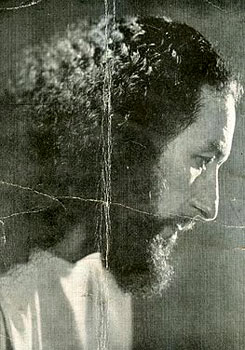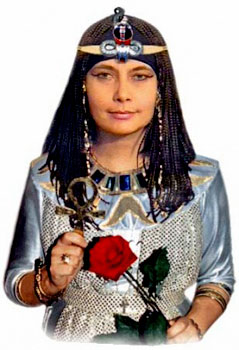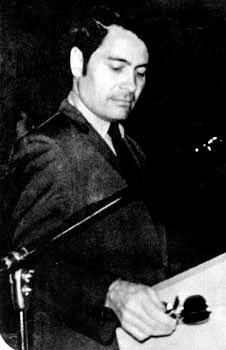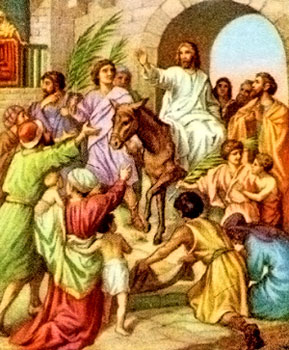|

by Acharya S
12 February 2013
from Freethoughtnation Website
For centuries since the alleged advent
of Jesus Christ, many people have believed that they are the
"second coming" of the Jewish messiah, creating followings of
devotees who likewise become convinced of these individuals' claim
to divinity.
When this "messiah complex" is
manifested during a journey to the biblical "Holy Land," it may be
identified as a psychosis called "Jerusalem syndrome."
Unfortunately, mental institutions have
seen their share of individuals claiming to be Jesus Christ,
but many such persons do not end up in the psych ward.
In the latter instances, these
individuals are too often the source of considerable distress and
danger, not only to themselves but also to their families, friends
and followers. In this regard, two recent cases of men claiming to
be Jesus Christ have ended in tragedy.
Defenders of Christ
The first of these tragic cases involves
a cult called "Defenders
of Christ" located in Mexico, where several sex slaves were
abused before the group was raided and 14 people arrested:
Mexican officials storm a home in Nuevo
Laredo, which is just across the border from Laredo, Texas, and find
10 victims, mostly women, living in squalor. Police say they were
beaten, forced into prostitution and made to have sex with leader
Ignacio Gonzalez de Arriba.
After filing a formal complaint against
the polygamous sex cult last year, agents with Mexico’s National
Immigration Institute helped spearhead the raid along with federal
police and prosecutors.
Inside the home, which is located just across the border from
Laredo, Texas, police say they found 10 Mexicans living in squalor.
The victims, mostly women, police said, were beaten, forced into
prostitution and made to have sex with the group’s charismatic
leader, Spaniard Ignacio Gonzalez de Arriba, as a form of tithing.
On the Defenders of Christ website,
Gonzalez de Arriba, is billed as
the reincarnation of Jesus.
"He was able to convince them that
they had to behave in certain ways to satisfy his economic and
sexual needs," Myrna Garcia, an activist with the Support
Network for Cult Victims, told CNN.
The Spanish cult leader Gonzalez de
Arriba thus claimed to be Jesus Christ, and his followers willingly
provided him with money and sex slaves.

The cult's website, shown in the image
above, makes extensive comparisons between its leader and purported
images of Jesus, as part of the "evidence" allegedly proving him to
be Christ.
Tacoma Jesus
In another recent case, a man in
Seattle, Washington, believed that he was Jesus Christ, to the
detriment of both himself and his victim, as he ended up ramming his
car into a city worker:
A 54-year-old Tacoma man has been
arrested for allegedly driving his car into a Pacific Gas &
Electric worker in Fresno, trapping the man between two vehicles.
According to a witness, Jett
Simmons claimed to be the reincarnation of Jesus Christ
before making racially charged threats and ramming his car into the
PG&E worker.
The witness - a hitchhiker "from Dogtown"
by way of West Virginia named Kai (that it--just Kai) - says that
after Simmons rammed the man, he got out of the car and tried to
smother a bystander with a bear hug. That's when Kai sprung into
action and hit the 6'4", 290-pound Simmons on the head with a
hatchet.
As can be seen, the belief that one is
Jesus Christ not only is delusional but also can be dangerous, both
to oneself and to the general public.
Many people have claimed
to be Jesus
The list of people over the centuries
who have claimed to be Jesus Christ or have been perceived as such
by their followers is long indeed, and includes the following:

Krishna Venta
-
John Nichols Thom
(1799-1838)
-
Arnold Potter
(1804-1872)
-
Bahá'u'lláh (1817-1892)
-
William W. Davies
(1833-1906)
-
Mirza Ghulam Ahmad of
Qadian, India (1835-1908)
-
Adolf Hitler (1889-1945)
-
George Ernest Roux
(1903-1981)
-
Ernest Norman
(1904-1971)
-
William M Branham
(1908-1965)
-
Krishna Venta
(1911-1958)
-
Ahn Sahng-Hong
(1918-1985)
-
Sun Myung Moon (1920-2012)
-
Jim Jones (1931-1978)
-
Marshall Applewhite
(1931-1997)
-
Charles Manson (b. 1934)
-
Yahweh ben Yahweh
(1935-2007)
-
Laszlo Toth (b. 1940)
|
-
Wayne Bent (b. 1941)
-
Ariffin Mohammed (b.
1943)
-
Mitsuo Matayoshi (b.
1944)
-
Hogen Fukunaga (b. 1945)
-
José Luis de Jesús
Miranda (b. 1946)
-
Lia Eden (b. 1947)
-
Inri Cristo (b. 1948)
-
Thomas Harrison
Provenzano (1949-2000)
-
Shoko Asahara (b. 1955)
-
David Koresh (1959-1993)
-
Marina Tsvigun/Maria
Devi Christos (b. 1960)
-
Sergey Torop (b. 1961)
-
Alan John Miller (b.
1962)
-
David Shayler (b. 1965)
-
Maurice Clemmons
(1972-2009)
-
Oscar Ramiro
Ortega-Hernandez (b. 1990)
|
Famed Ethiopian emperor Haile Selassie I
(1892-1975) did not make this claim for himself, but his followers
were convinced he was Jesus.
There are, of course, many, many more
such individuals known not to the public at large but among small
followings all over the world.
Multiple divinities,
prophets and famous people
In some instances, the claimants to
divinity also assert that they are the "reincarnation" of other
famous and esteemed figures:
Ernest Norman (1904-1971), an American
electrical engineer who co-founded the Unarius Academy of Science in
1954, was allegedly Jesus in a past life and his earthly incarnation
was as an archangel named Raphiel.
He claimed to be the reincarnation of
other notable figures including Confucius, Mona Lisa, Benjamin
Franklin, Socrates, Queen Elizabeth I, and Tsar Peter I the Great.
Ariffin Mohammed (b. 1943) is,
"believed by his followers to be the
incarnation of Jesus, as well as Shiva, and Buddha, and
Muhammad."
Like father, like son?
At times, this delusion affects multiple
generations:
For example, William W. Davies
(1833-1906) "taught his followers that he was the archangel
Michael, who had previously lived as the biblical Adam, Abraham,
and David." His first child was subsequently declared to be
"Jesus Christ," while his second son assumed the role of "God
the Father."
Female Christs

Individuals suffering from messiah
complex have run the gamut of nationalities, ethnicities and races.
They tend to be male, as would seem
appropriate since Christ was alleged to have been a man. However, on
occasion women such as Marina Tsvigun or "Maria Devi Christos" (b.
1960) also have made this claim to be the "son of God," so to speak.
Another female would-be Christ is Lia
Eden (b. 1947):
...born as Lia Aminuddin in Makassar,
Indonesia. In 1998, she claimed that she met the angel Gabriel
several times, convincing her that she was Imam Mahdi or Messiah who
brought the prophecy of the world security and justice before the
doomsday. In another occasion, she also claimed that she was the
reincarnation of Mother Mary and her son, Ahmad Mukti as the
reincarnation of Jesus.
Eden was convicted of "blasphemy" in the
Muslim country of Indonesia and spent years in prison.
One current "Jesus," Alan John Miller
(b. 1962), has a female partner named Rozena, who,
"identifies
herself as the returned and chic Mary Magdalene."
Deadly Delusions of
Grandeur
A number of these messianic cults have
ended very badly, such as that of
Adolf Hitler, whose millions of German followers believed he was
a figure like Jesus Christ, if not Christ himself.
Also notorious was Charles Manson, who
convinced his followers he was the "son of man," Jesus Christ, and
that they should murder brutally several innocent people.

Other examples of violent outcomes
include,
-
Jim Jones - who "claimed to be the reincarnation of Jesus, Akhenaten, Buddha, Vladimir Lenin and Father Divine" - and
Marshall Applewhite of "Heaven's
Gate" notoriety, both of whose followers allegedly
committed mass suicide.
-
At Waco, Texas, David Koresh of Branch
Davidian infamy holed up in a "compound," which was burned to the
ground, killing dozens of men, women and children trapped inside.
-
In 1984,
Aum Shinrikyo cult leader Shoko
Asahara (b. 1955) convinced his followers to release sarin gas
in a Tokyo subway and was subsequently sentenced to death. Less well
known is Maurice Clemmons (1972-2009), who murdered four police
officers in Washington State in 2009, while claiming himself to be
Jesus.
-
Christ claimant Thomas Harrison Provenzano (1949-2000) was an American convicted of murder who was
"possibly mentally ill," an observation that would appear to be
obvious.
-
Messiah wannabe Hulon Mitchell, Jr. (1935-2007), aka
"Yahweh ben Yahweh," was convicted in 1992 of conspiracy to commit
murder, receiving an 18-year sentence.
-
And then there was Oscar Ramiro
Ortega-Hernandez (b. 1990), who used an assault rifle to attack the
White House, claiming he was Jesus Christ sent to kill American
president Barack Obama, the purported anti-Christ.
-
In 1958, Krishna Venta (pictured above)
was, "suicide bombed by two disgruntled
former followers who accused Venta of mishandling cult funds and
having been intimate with their wives."
As we can see, money and sex appear to
be the motivators for a significant number of these would-be
messiahs, as is power, of course, which would be total, as,
according to Christianity, Jesus is the omnipotent or
all-powerful God.
"As we
can see,
money
and sex appear to be the motivators
for a
significant number of these would-be messiahs."
As another prominent example of how
messianic delusion is dangerous to the public, the
Hungarian-Austrian would-be savior Laszlo Toth, still alive, is
notorious for having damaged Michelangelo's famous sculpture the
Pietŕ with a hammer.
And, as an example of danger to
themselves, messiah claimant from the Latter Day Saints or
Mormonism Arnold Potter (1804-1872) believed he could "ascend to
heaven," killing himself as he jumped off a cliff.
Other 'Divine Prophet'
Pretenders
Other cult leaders believing themselves
divine in one way or another have been found guilty of the sexual
assault, rape and/or trafficking of minors, such as
...who convinced his followers that he
was the only true, living prophet of God - along with Bernie Lazar
Hoffman (b. 1934), aka "Tony
Alamo," who believed that he and his wife were the "two
witnesses" in the biblical book of Revelation.
Then there are those countless others
suffering mental illness who have claimed "God" told them to harm
others, including their own children, with the example of the
biblical god Yahweh requiring Abraham to sacrifice his beloved son,
much as the New Testament God the Father was said to have done with
his beloved son.
The list of those experiencing religious
delusions is lengthy and filled with tragedy and peril. Not a few of
these claimants to messiahship are still alive, undoubtedly to be
joined by many more in the future, so long as the world-savior story
continues to enthrall the human mind.
Thus, there are numerous "Jesus Christs"
running about the world, none of whom probably agrees that any of
the others are sane and truthful.
"There
are numerous 'Jesus Christs' running about the world,
none of
whom probably agrees
that
any of the others are sane and truthful."
Jerusalem Syndrome

When this messianic complex has occurred
in the biblical city of Jerusalem, it is part of a wider "Jerusalem
syndrome," a form of "psychosis" that causes visitors to the "Holy
Land" to believe they are somehow involved in biblical events,
including as the "second coming" of Jesus.
A paper on "Jerusalem
syndrome" in the British Journal of Psychiatry
(2000:176:86-90) seeks to describe the condition as "a unique acute
psychotic state."
The
Society of Biblical Literature defines the syndrome as a,
"clinical psychiatric diagnosis
first identified in the 1930s by Dr. Heinz Herman, one of the
founders of modern psychiatric research in Israel."
"In
consideration of all these facts,
it
would seem best not to encourage and validate such individuals
in
their delusions and psychoses."
During holidays and other times of the
year, along with milestones like the turn of the millennium in 2000,
Israel's hospitals and mental institutions experience a surge of
such persons suffering a psychotic breakdown.
In consideration of all these facts, it
would seem best not to encourage and validate such individuals in
their delusions and psychoses.
The
Jerusalem syndrome is a group of mental phenomena involving the
presence of either religiously themed obsessive ideas, delusions or
other psychosis-like experiences that are triggered by a visit to
the city of Jerusalem.
It is not endemic to one single religion
or denomination but has affected Jews, Christians and Muslims of
many different backgrounds.
The best known, although not the most prevalent, manifestation of
the Jerusalem syndrome is the phenomenon whereby a person who seems
previously balanced and devoid of any signs of psychopathology
becomes psychotic after arriving in Jerusalem. The psychosis is
characterised by an intense religious theme and typically resolves
to full recovery after a few weeks or after being removed from the
area.
The religious focus of the Jerusalem
syndrome distinguishes it from other phenomena, such as the Stendhal
syndrome, which is reported in Florence, Italy, or the Paris
syndrome, which has been reported predominantly in Japanese
individuals.
In a 2000 article in the British Journal
of Psychiatry, Bar-El et al. claim to have identified and described
a specific syndrome which emerges in tourists with no previous
psychiatric history. However, this claim has been disputed by M.
Kalian and E. Witztum.
Kalian and Witzum stressed that nearly
all of the tourists who demonstrated the described behaviors were
mentally ill prior to their arrival in Jerusalem.
They further noted that, of the small
proportion of tourists alleged to have exhibited spontaneous
psychosis after arrival in Jerusalem, Bar-El et al. had presented no
evidence that the tourists had been well prior to their arrival in
the city. Jerusalem Syndrome is not listed or referenced in the DSM
IV.
Jerusalem syndrome has previously been
regarded as a form of hysteria, referred to as "Jerusalem squabble
poison," or fičvre Jerusalemmiene. It was first clinically described
in the 1930s by Jerusalem psychiatrist Heinz Herman, one of the
founders of modern psychiatric research in Israel....
This syndrome has proved dangerous on
more than one occasion, including a notorious case in which an
Austrian visitor to Jerusalem,
Denis Michael Rohan,
"overwhelmed with a feeling of divine mission, set fire to the al-Aqsa
Mosque."
His crime was followed by "citywide
rioting," events immortalized in a film entitled "The Jerusalem
Syndrome."
"This
syndrome has proved dangerous on more than one occasion."
While this syndrome is not listed in the
Diagnostic and Statistical Manual of Mental Disorders ("DSM
IV"), it is clearly considered by health professionals to be a
mental disorder, specifically a psychosis:
The classic Jerusalem syndrome, where a
visit to Jerusalem seems to trigger an intense religious psychosis
that resolves quickly or on departure, has been a subject of debate
in the medical literature.
Most of the discussion has centered on
whether this definition of the Jerusalem syndrome is a distinct form
of psychosis, or simply a re-expression of a previously existing
psychotic illness that was not picked up by the medical authorities
in Israel....
During a period of 13 years (1980-1993)
for which admissions to the Kfar Shaul Mental Health Centre in
Jerusalem were analysed, it was reported that 1,200 tourists with
severe, Jerusalem-themed mental problems were referred to this
clinic.
Of these, 470 were admitted to hospital.
On average, 100 such tourists have been seen annually, 40 of them
requiring admission to hospital.
"On
average, 100 such tourists have been seen annually,
40 of
them requiring admission to hospital."
Jerusalem syndrome "overwhelmingly" affects
Christians, often causing them to believe
they are the messiah. Doctors in Jerusalem at times will refer to
such saviors as "chosen
ones."
Hence, the same diagnosis of mental
illness can be asserted of the
messiah complex, which is comparable to a form of delusion,
megalomania and
narcissism.
Witnessing such individuals gives the
impression of a severe form of narcissism, in fact, as they fixate
and obsess on "I," "me," "my" and "mine," desperately attempting to
draw attention to themselves.
This mental illness has caused much
suffering, and it is always sad when children are involved in these
cases.
Jesus as a mythical
figure
This misapprehension is all the more
tragic in consideration of the fact that there exists no credible,
scientific evidence that the "Jesus Christ" of the biblical gospel
story was ever a historical personage in the first place.
In reality, the
evidence points to him being a fictional composite of characters,
real and mythical.
A composite of multiple "people," of
course, is no one. In this regard, it seems a crime against humanity
to perpetuate this fallacy, to the detriment of millions of people,
including those victimized by claimants to divinity, as well as
sufferers of this psychosis themselves.
It would seem logical to suggest that,
without the conditioning provided by certain religions, these mental
disorders would not be so prominent in the world today.
In this regard, scholarship factually
and scientifically demonstrating religion to be largely allegorical,
mythical and fictional could provide a solution to this problem and
relief for future suffering.
|





